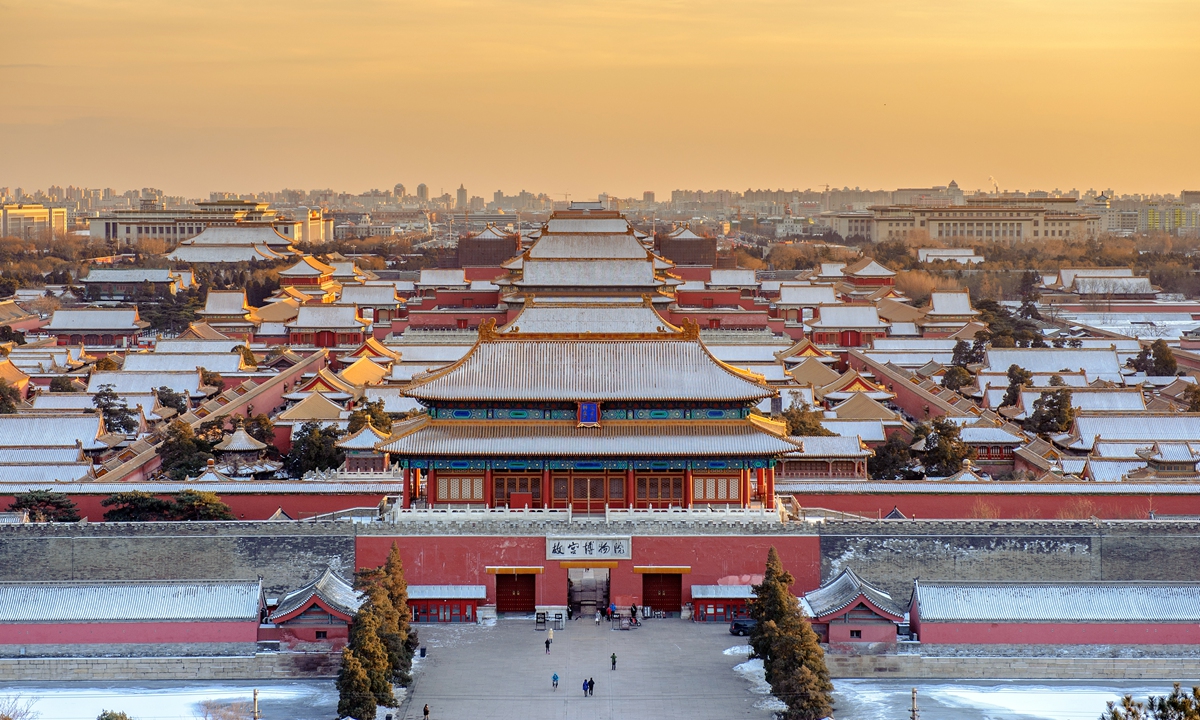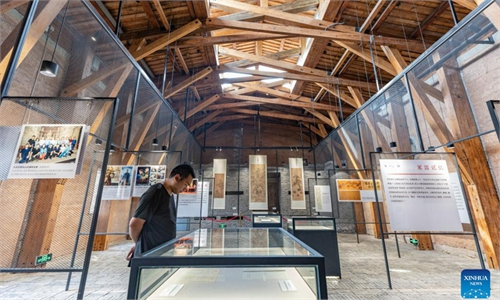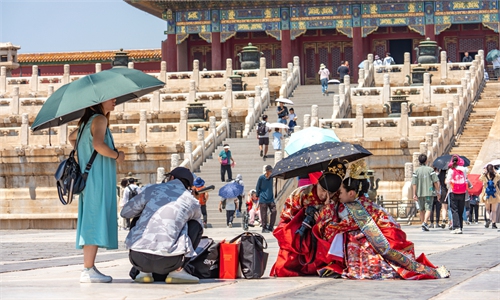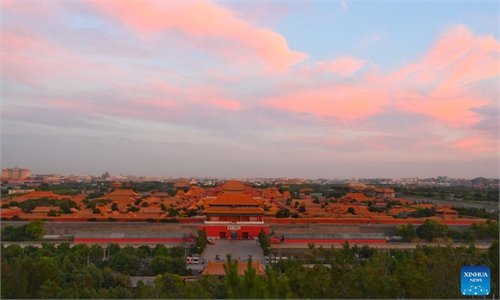ARTS / CULTURE & LEISURE
Palace Museum restores drainage system despite unprecedented rain

The Palace Museum Photo: VCG
A staff member from the Palace Museum on Monday denied rumors that it had never experienced waterlogging in its history and clarified to the media that the section waterlogged during the recent torrential rain in Beijing has been swiftly addressed, with the drainage system promptly restored to normal operations.
The hashtag "A staff member denied the saying that Palace Museum had not experienced waterlogging in 600 years" trended on China's Twitter-like platform Sina Weibo, receiving over 200 million views and more than 4,000 discussions as of Tuesday night.
Prior to this, videos circulating on social media platforms, including Douyin, showed water accumulating in the Cining Palace, located in the western part of the complex, during heavy rain.
Di Yajing, the director of the World Heritage Monitoring Department of the Palace Museum, refuted online claims that the Palace Museum had never experienced waterlogging in its 600-year history. She pointed out that historical records mentioned occurrences of leaking roofs, collapsed walls, and waterlogging in courtyards within the Palace Museum, according to a report by Beijing News Radio.
For instance, records mentioned water accumulating to varying depths in parts of the Palace Museum in 1885. However, these incidents were promptly addressed by locating and clearing the blocked areas, she said.
The Palace Museum undergoes dredging three times a year more than it did during the Ming (1368-1644) and Qing (1644-1911) dynasties, she added.
The Palace Museum's drainage system was first built during the Ming Dynasty. The ancient rain ditches span more than 15 kilometers, of which nearly 13 kilometers are hidden underground. All those ditches lead to the Inner Golden River connected to the surrounding moat outside the Palace Museum as well as the Outer Golden River and the Zhonghai-Nanhai water systems, according to the Xinhua News Agency.
According to the BNR report, rainwater first falls on the roofs and is directed to the ground. Many courtyards are designed with a northern high and southern low configuration, causing water to flow from the middle of the courtyards toward the sides and then into the ditches, which eventually converge into the Jinshui River. Some courtyards directly drain through those small holes in the ground to the hidden ditches, then to the external branch ditches, which in turn flow into the main ditches before reaching the Jinshui River.
Presently, the Palace Museum maintains two independent drainage systems: the municipal sewage system, constructed in the 1950s to accommodate public facilities such as restrooms after the palace opened to visitors, and the rainwater drainage system, which still follows the ancient path, releasing water into the Jinshui River.



